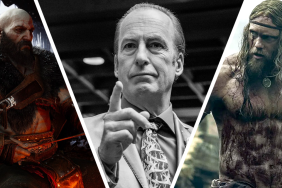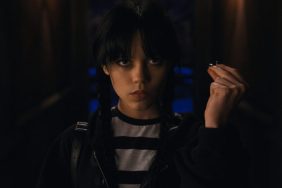Well, now that Stranger Things Season 4 Volume 2 has been finally released on Netflix — seriously, that felt like a long wait! — it’s time to figure out where the fourth chapter stands in the Duffer Brothers’ streaming saga.
Before we start, let me quickly point out that none of the Stranger Things seasons are bad. In terms of blockbuster television, what the Duffer brothers have accomplished deserves mention alongside (the first five seasons of) HBO’s Game of Thrones, Band of Brothers, and the recent Midnight Mass (where it stands against classics like The Wire, The Sopranos, and Breaking Bad is anyone’s guess). The series’ sustained quality and success is nothing short of a miracle.
Also, isn’t it weird how Stranger Things have given us the best Freddy Krueger, Star Wars, and Terminator entries since their peak in the late 1980s/early ’90s? What started as a show that cleverly paid homage to all things Steven Spielberg and Stephen King transformed into its own unique franchise (maybe even sub-genre) and, in many ways, has surpassed the various films that served as inspiration.
Keep that in mind when pouring through this list and know that while one season may be ranked lower than the next, all that really means is we gave one an A and the other an A-.
Now, let’s make like Vecna and crack this bitch open!
RELATED: Stranger Things Season 4 Volume 2 Review: The Series’ Best Effort Yet
4. Stranger Things Season 2
Season 2 was always going to pale in comparison to its predecessor. The frenzy that surrounded the initial Stranger Things was nothing short of eye-popping — a pop-cultural phenomenon that gave new life to past stars (Winona Ryder and Matthew Modine) and found a new wave of talent in its colorful young core (to say nothing of David Harbour’s Hopper surprisingly emerging as this generation’s equivalent to Han Solo). So, the fact that the second chapter works at all is a miracle in and of itself.
Really, this is the one season that feels a tad redundant, which is saying something considering every entry more or less follows the same beats — a new threat arises leading the characters to splinter off into groups that eventually merge together in the final episode to watch Eleven/Jane scream. This is also the season that saw the Duffer Bros. try to further expand the Stranger universe with the introduction of another powerful child, El’s sister Kali, a story beat that only muddied the waters and needlessly diverted our attention away from the main characters.
Even so, magic is found in new additions Bob (Sean Astin), Max (Sadie Sink), and Billy (Dacre Montgomery). The Duffers also do a terrific job crafting a complex relationship between the overprotective Hopper and rebellious El. Homages to James Cameron’s Aliens abound, sometimes to a distracting degree, but overall Season 2 remains the weak link of the franchise. An entertaining, though bumpy sophomore session with our Hawkins heroes.
3. Stranger Things Season 1
As stated, Stranger Things was never meant to be that successful. Season 1 works in spite of what feels like a relatively minor budget — and Winona Ryder’s bonkers performance — mostly because it sidesteps the big set pieces in favor of quieter moments between its delightful stars. Millie Bobby Brown runs away with the production, delivering a quiet, albeit powerful performance as our resident superhero Eleven, while David Harbour, Finn Wolfhard, Natalie Dryer, Charlie Heaton, Caleb McLaughlin, Gaten Matarazzo, and Joe Keery supply an equal dose of pluck and heart in supporting roles. Harbour, in particular, does wonders as the world-weary chief of police Jim Hopper, a broken man discovering a sort of rebirth via the bizarre events surrounding the disappearance of young Will Byers (Noah Schnapp, in a limited role). An abundance of flawed characters (a device curiously lacking from later seasons) is what makes Stranger Things so special — they feel like real human beings dealing with extraordinary circumstances on top of the difficulties found in day-to-day life. Good stuff.
On a negative note, more than any other season, Stranger Things Season 1 leans a little too heavily on ’80s nostalgia with clear references to Spielberg productions such as E.T., Close Encounters of the Third Kind, Jaws, and Poltergeist hiding in plain sight. While the plot eventually charts its own unique course in the final few episodes (paving the way for that emotional, Moby-infused finale), the over-reliance on familiarity is enough to drop the original adventure down a few notches on our list.
2. Stranger Things Season 4
I’m still processing everything that happened in Stranger Things Season 4. Make no mistake, this was a great season — maybe even the best — but it was a lot to take in; and an overwhelming experience due in large part to the epic runtime of each episode. Honestly, I think a tighter edit would catapult Season 4 into the stratosphere. As is, for all the astonishing revelations and satisfying payoffs, there were a few storylines (Hopper’s bit at the Russian prison and El’s training process, for example) that ran a little too long and disrupted the pacing. On a second watch, knowing how it all plays out, I found myself zoning out of certain sections, which is something I didn’t do that often when rewatching the previous three seasons.
So, why is Season 4 so high on this list? Well, for every misstep, the Duffers deliver about five or six genuinely rousing moments — some of which stand as the best bits of the entire show. Episodes 8 and 9 have more eye-popping sequences than the last dozen Star Wars movies/TV shows combined — El taking down that military chopper was an honest-to-God “holy sh–” moment if there ever was one — and any number of powerful character beats — Max, face adorned with blood, sobbing, “I’m not ready to die,” chief among them — to rival most modern-day films. The image of Eddie (Joseph Quinn) rockin’ out to Metallica’s “Master of Puppets” in the Upside Down is engrained on my brain for all time, Max’s Episode 4 escape from Vecna to the tune of Kate Bush’s “Running Up That Hill” is already justifiably cemented in the legacy of pop culture, and I’ll never forget the adrenaline that surged through my lifeless corpse when Hopper picked up that sword to battle a Demogorgon. Good stuff.
Every character gets a chance to shine in the latest season — even Caleb McLaughlin, usually relegated to second fiddle, gets an opportunity to show off his splendid acting chops. While the Duffers occasionally stumble under the weight of the massive production, they do a marvelous job delivering a surprisingly character-driven, emotionally charged, occasionally thrilling chapter that tweaks the formula just enough to make it all feel fresh. Where this massive saga goes from here is anyone’s guess, but you can be sure I’ll happily fork over whatever money Netflix will charge us all to stream Stranger Things Season 5 a few years from now.
RELATED: Stranger Things Season 4 Volume 1’s Best Moments
1. Stranger Things Season 3
I’ve seen a number of social media posts deriding Season 3 as the worst of the Stranger Things saga, which is an opinion I can’t understand. Out of the four entries we’ve received thus far, Season 3 feels the most like a big-budget blockbuster right down to the action-packed finale between our plucky Hawkins heroes and a massive monster (made out of the melted corpses of town citizens) set in a shopping mall. This is the one where every character finally comes into their own. El is given more personality thanks to a fun side quest alongside Max; Will, Lucas, and Mike deal with the burdens brought upon by young love; Hopper transforms into a full-blown action hero, replete with a Magnum P.I. styled t-shirt; Steve completes his maturation from dickweed jock to a protective father figure and forms the show’s best squad with Dustin, Erica (Priah Ferguson), and newbie Robin (a fantastic Maya Hawke); Nancy takes the reigns as the de factor leader of the group, and Billy’s one-dimensional bully is expanded to the point you actually feel sorry for him by season’s end.
More than anything, Season 3 moves at a breakneck pace and perfectly balances humor, drama, and spectacle. No other show on TV would have the balls to pause its third act action long enough for two kids to belt out Limahl’s “Never Ending Story,” and few would dare feature the bloody violence (much of it enacted on children) and strong language featured predominantly in the Duffers’ second sequel. Indeed, this is the type of pop culture content we rarely see anymore — a show without boundaries, unafraid to take a few risks here and there. It’s just like all of those old-school Spielberg-ian flicks. Ironically, for all its whimsical fantasy, Stranger Things captures the realities of youth better than most Hollywood productions.
All that is to say that Season 3 delivers the goods more than any other season. All eight episodes are perfectly paced, wonderfully acted, and executed brilliantly. Homages to The Terminator (in the form of the ruthless Russian villain Grigori) and Jaws (via Cary Elwes’ slimeball mayor) are merely icing on the cake. There’s a palpable sense of electrifying excitement to be had in Season 3, which stands as a shining example of blockbuster entertainment done right.










